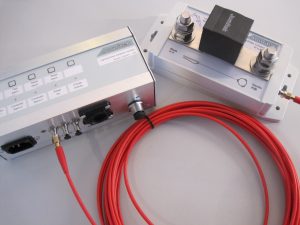Cutting edge technology lower preventive maintenance costs of wind turbines
Wind turbines represent a huge investment. Prolonging the life time and lowering the maintenance cost secures the return on that investment. Jomitek offer the Lightning Down Conductor Sensor (LDCS) as a 2-in-1 solution catering for this purpose.
 Detect broken down conductors to ensure service visits only when required
Detect broken down conductors to ensure service visits only when required
The LDCS can detect partially or fully disconnected sections of a lightning down conductor within a turbine blade. A fully operational lightning down conductor protects a blade from unwanted flash-overs and thereby related damage to the turbine.
The Jomitek Lightning Down Conductor Sensor remove the need for regular use of drones, cranes, or similar, as well as workforce for scheduled maintenance visits for inspection of lightning down conductor systems, replacing this need with a solution for continuous monitoring. Online monitoring is achieved using a unique patented method for comparative measurements of the naturally occuring atmospheric charge being channeled through each of the wind turbine blade down conductors systems to electric ground potential.
Reduce wear on blades caused by precipitation, e.g. in the form of rain and hail
In particular for the leading edge at the tip of a wind turbine blade, where the rotational speed is greatest, wear due to precipitation is an industry wide concern. When water impacts on the blade various effects lead to degredation of the blade material. The severity of these effects are directly correlated to the speed of the blade, where even a moderate speed decrease may substantially decrease the level of wear.
As a secondary effect of the LDCS ability to measure the flow of atmospheric charge through the down conductor system, it is capable of detecting the distinct charge flow pattern generated by precipitation. Reacting within seconds of the onset of precipitation, the system is able to provide the wind turbine control system a severity graded precipitation warning, as it occurs, as well as remove or downgrade the warning as the water deluge passes.
In effect, using the LDCS, the wind turbine control is able to react to precipitation, based on conditions local to the wind turbine itself, and only to the extent and duration required. In this way, the energy production of the turbine may be slightly lowered due to an enforced lower rotational speed (e.g. 0-30% slower than nominal), however with a clear net advantage in a substantially prolonged operational life of the leading edge of the blades.
Interested?
Please contact Jomitek if there are further questions or request for quotes for particular solutions!
Further product details can be found in the Lightning Down Conductor Sensor manual.
